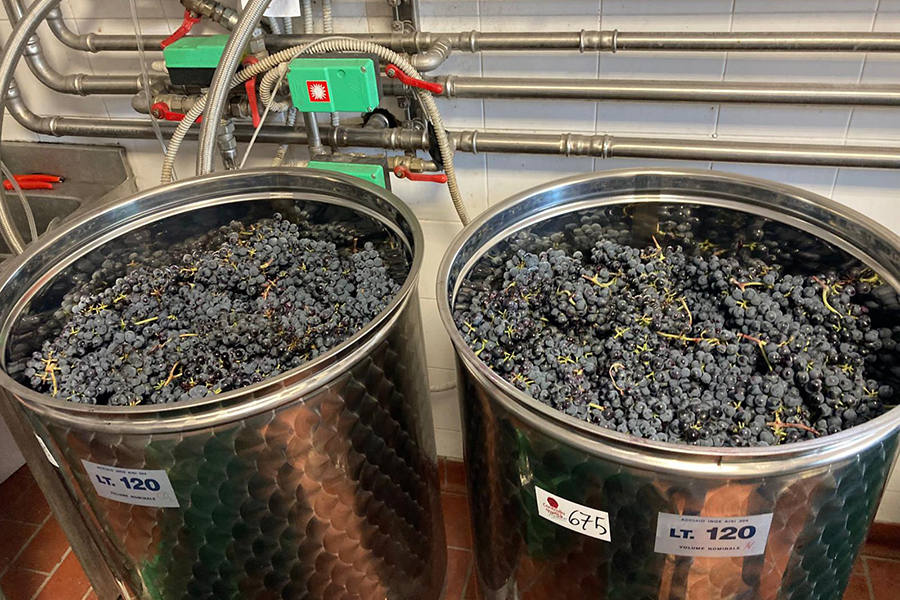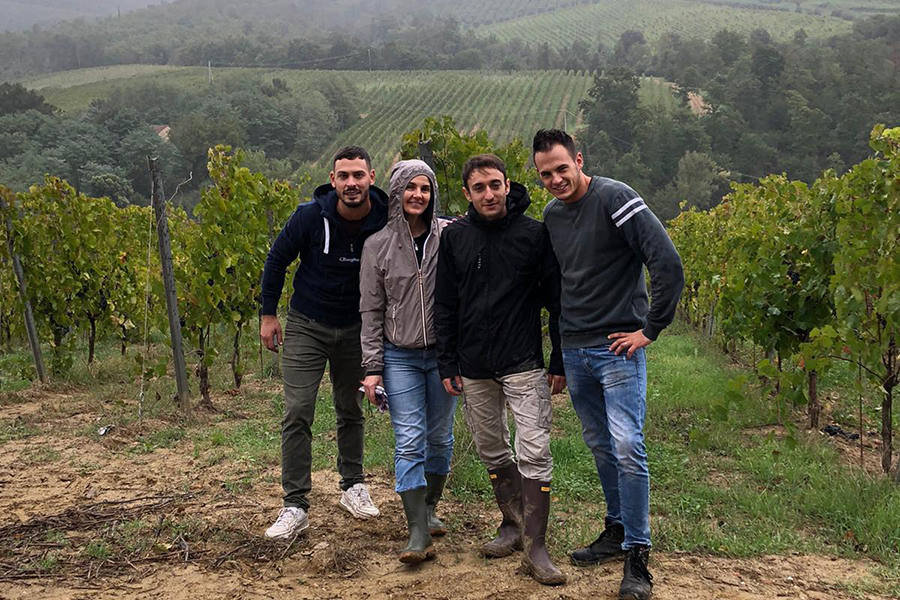
Greater safety and sustainability in winemaking, along with improved nutritional qualities in new wine: these are the advantages of nitrogen atmosphere maceration, tested for the first time in a study by the University of Pisa and published in the journal Food Chemistry.
“New wine is traditionally produced using carbonic maceration, in which whole grape bunches ferment in environments saturated with CO₂. However, this technique raises safety concerns for winery workers and has environmental drawbacks due to the use and production of carbon dioxide,” explains Alessandro Bianchi from the Department of Agricultural, Food and Agro-Environmental Sciences. “That’s why we decided to test an alternative approach: using nitrogen, an inert, safe and more sustainable gas that is already widely available in winemaking facilities.”
The trials began in the laboratory and were then conducted in the experimental winery of “Podere Cipollini” of the University of Pisa in San Piero a Grado, where bunches of Gamay teinturier—a grape variety commonly used for new wine—underwent controlled-atmosphere maceration for eight days. The result was a wine with significantly higher levels of anthocyanins and polyphenols, compounds that are essential for the quality and stability of the final product. Compared to the traditional method, nitrogen maceration allowed for more efficient extraction of phenolic compounds without compromising the wine’s aroma. Moreover, nitrogen improved safety in the winery and reduced the environmental impact of the process, with additional economic benefits thanks to the use of on-site membrane generators for nitrogen production.

The University of Pisa research team included Alessandro Bianchi, Gregorio Santini, Stefano Pettinelli, Chiara Sanmartin, and Fabio Mencarelli from the Department of Agricultural, Food and Agro-Environmental Sciences.
Also involved in the study were the University of Campania Luigi Vanvitelli (Department of Environmental, Biological and Pharmaceutical Sciences and Technologies), the University of Tuscia (Department for Innovation in Biological, Agri-food and Forestry Systems), the University of Naples Federico II (Department of Agricultural Sciences, Viticulture and Oenology Section), and CREA – Research Centre for Olive, Fruit and Citrus Crops based in Caserta.



